Reading time: ± 7 minutes
Hello Sílvia. It’s a great pleasure to talk to you for our Cycling Dialogues …
We want to talk about cities, about mobility and, as you can imagine, about cycling. We are looking forward to hear about your experiences as one of the main performers in changing mobility in Barcelona.
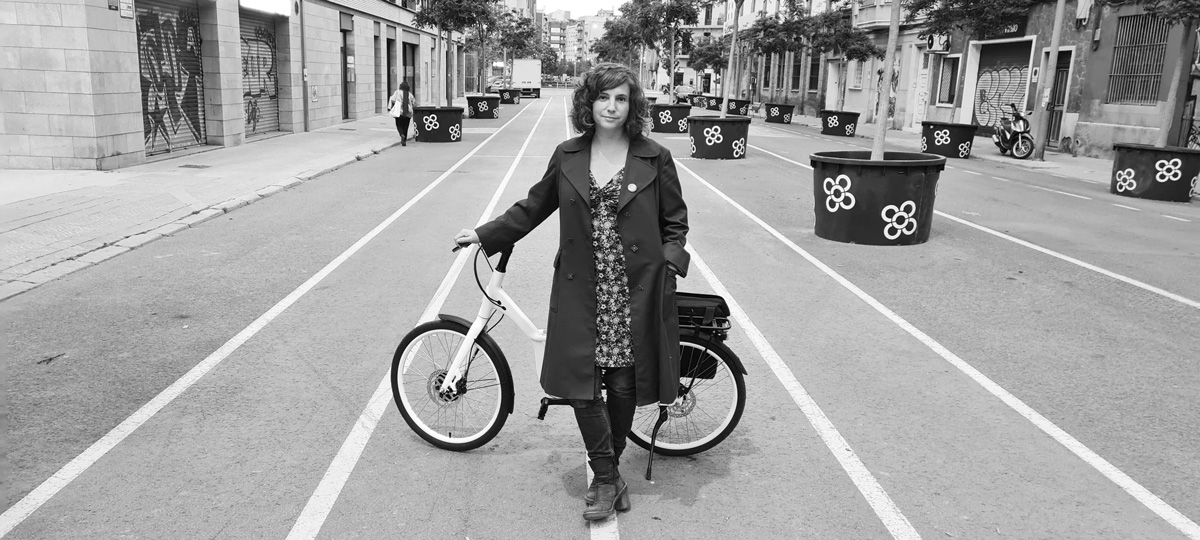
Sílvia Casorrán is Deputy Chief Architect at Barcelona City Council.
She graduated in Environmental Sciences, is specialist in Sustainable Mobility and was Head of bicycle projects in the Metropolitan Area of Barcelona (2015–2020).
How many bicycles do you have at home? Do they have a name?
We’ve got four bikes, one for each person in the family. And we are also members of Bicing, the public bike sharing service in Barcelona. I’ve just got a new e-bike a few days ago, and her name is ‘Carmela’.
Ok, let’s go into serious stuff now. Climate change, air pollution, economic crisis, human migrations, inequalities, sustainability … We have a long list of challenges cities are, and will have to tackle in a future. Barcelona is also going to receive the impact of these threats.
How is the city planning to minimize the impact of these threats from a mobility perspective in general and more particularly looking at active mobility?
The path we need to follow is clear already since the first Mobility Plan in 2006: we need less cars in the city!
Barcelona has a density of 16,000 inhabitants per km2 (four times the density of Amsterdam), and nearly 6,000 vehicles per km2, in a very small area of 100 km2. Associated problems have been clearly identified: air pollution, noise, traffic accidents, public space occupancy and of course climate emergency.
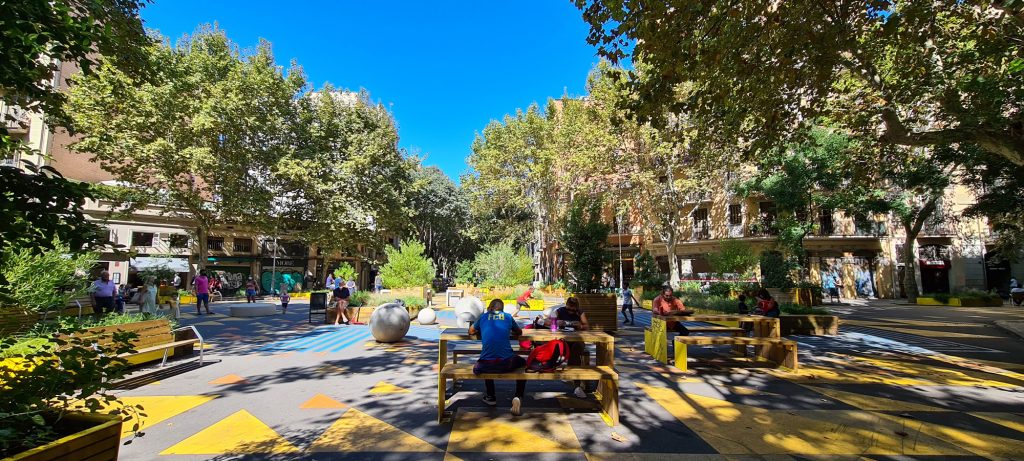
The city is working hard to reconquer public space from cars to give it back to citizens. This is a long and difficult process consisting of removing traffic lanes, parking lanes, and implementing traffic calming areas.
At the same time, the city is implementing a low emission zone, improving public transportation and boosting sustainable and active mobility. In practice this means: 240 km of existing bike lanes, our public bike sharing system, more Superblocks and traffic calming actions. Particularly around schools but also in the rest of the city were we want to achieve 75% of the streets with a maximum speed of 30 km.
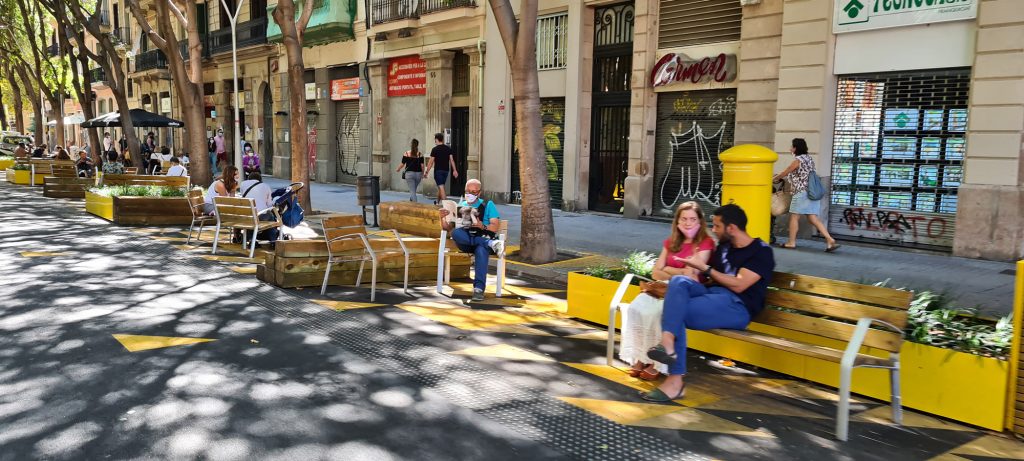
What is Barcelona’s cycling agenda for the next years?
Barcelona wants to become a 100% cycling city. And for that reason, we need four main steps:
- completing cycling infrastructure to reach a safe and connected network
- making sure maximum speeds are respected by motorized traffic (so cyclists of any condition feel comfortable to cycle in any street)
- educating the population in terms of sustainable mobility and cycling
- creating bicycle parking facilities for residents, companies, schools and at transport hubs to boost multimodal transport.
Who are the main actors currently pushing for this ‘cycling revolution’? How do you envision governance? And what are the tools at hand to accomplish this shift, apart from investments in infrastructure?
The cycling community in Barcelona has been growing more and more in the past years. Now the city is quite well prepared and families with kids and teenagers on their own, start feeling safe enough to cycle for daily commutes. Right now we’ve got an impressive social movement in Barcelona called ‘Revolta Escolar’ (school revolution), spreading in Catalonia, but in other countries as well. It is pushing hard to reach a safe and healthy environment around schools. Their demands include: creating more bike lanes, calmer streets, and more bicycle parkings around schools to promote #bike2school.
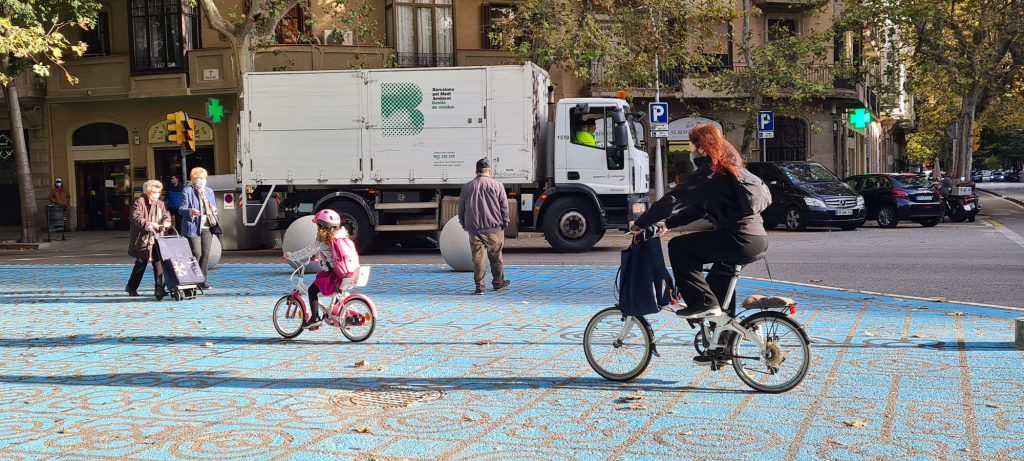
We’ve got associations such as BACC (Bike Club Catalonia), defending cyclists’ rights in the political agenda and public discussions. Cyclists are demanding more and better cycling infrastructure and regulations, but these not only depend on the city.
One example just to show how mind-boggling some Spanish regulations are: it is forbidden to cycle carrying two kids on a ’regular’ bike. The rule says you can only carry one kid up to 7 years old!
Mobility issues in Barcelona have a metropolitan dimension. 93% of trips in Barcelona’s metropolitan area (36 municipalities, 636 km2) cover less than 10 km and are doable by bike. The Metropolitan Area (AMB), municipalities and regional governments are cooperating to implement common strategies for cycling promotion. Some examples are:
- Bicivia (550 km network);
- Bicibox (safe bike parking facilities);
- Biciempresa (program to promote cycling to work);
- Bicibus (program to promote cycling to school).

As well as common regulations for bikes and e-scooters and the creation of logistics hubs around the metropolitan municipalities (last mile logistics is probably the biggest challenge in cities).
< map of Bicivia, the metropolitan cycling network in Barcelona (click to enlarge)
Can you tell me more about ‘last mile logistics’?
In 2021 there will be six new cycle logistics hubs in Barcelona metropolitan area (in Esplugues, Cornellà, Sant Joan Despí, Santa Coloma, Cerdanyola and Sant Cugat). Area Metropolitana de Barcelona together with these municipalities are convinced that this is a great way to promote and help local economy after the Covid-19 crisis, and they are trying to show that a different way of last mile delivery is possible when public bodies really push for it. There are some existing initiatives in Barcelona (such as Vanapedal and Ecopol) but at the moment they struggle if they don’t receive support from the Municipality. It’s necessary to implement more restrictions to the circulation of motorized vehicles.
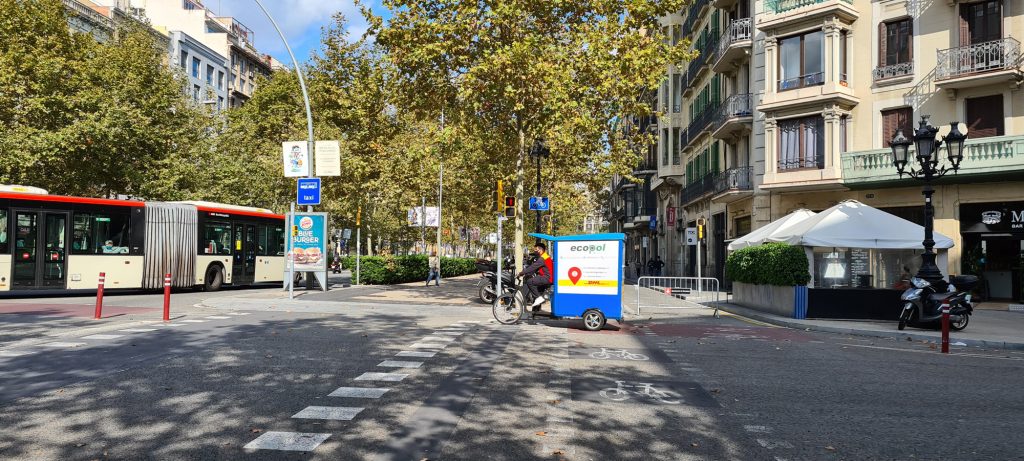
One of the comments you hear in Barcelona when you talk about cycling, especially coming from the Netherlands, is: ‘Barcelona is not flat’. Do you think this is an obstacle impossible to surmount? What will be the good points of Barcelona as a city to become a bike friendly city?
Since e-bikes appeared on the market, hills are not an obstacle anymore! E-bikes for personal use are becoming more and more common in Barcelona. The public sharing system Bicing, has now 2,000 electric bikes, and they are very popular with an average use of 11 trips per day and peaks of 14. The mechanic bikes, with 7,000 units, shows an average around 6-7 trips per day).
The compactness of Barcelona makes it very easy to reach the whole city by bike in maximum 30 minutes and its metropolitan area in 60 minutes. This fact makes cycling very competitive when compared to other means of transport. In the end, together with walking, cycling is the most reliable way of moving in terms of time.
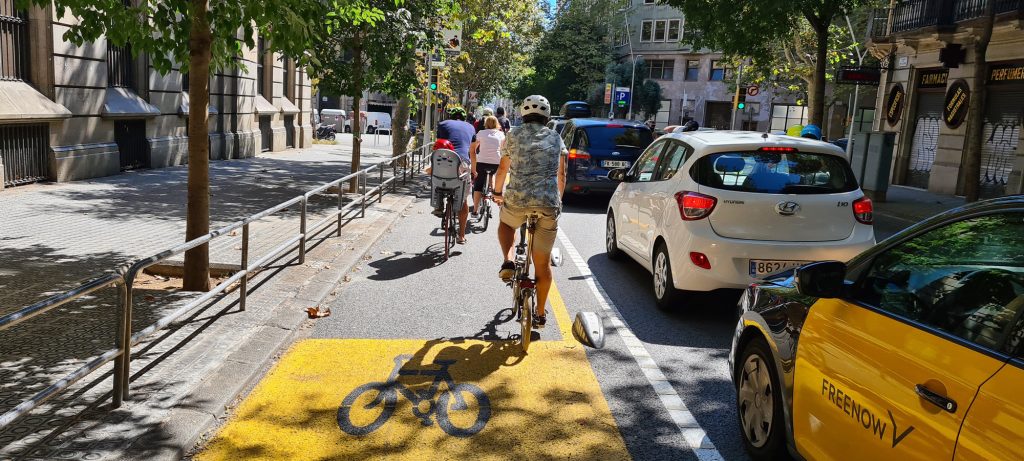
Barcelona is a compact city. Larger than the Dutch main cities but small if we compare it to other large metropoles like Paris, London or Mexico City. But you come from the AMB (Metropolitan Area of Barcelona) and know about both scales. How do they connect and how does this connection facilitate mobility in the city?
Barcelona, Sant Adrià, L’Hospitalet, Esplugues… they are all one large continuous area. In all these cases the border between municipalities overlaps: one sidewalk belongs to one municipality and the other sidewalk to another. It doesn’t make sense that mobility policies are not coordinated!
Barcelona Metropolitan Area (AMB) is a public body that has authority in mobility issues, but also in water and waste management, in urban planning, etc. Many policies, such as cycling actions, will not be effective in strictly local or municipal terms. This is why it is so important that mobility policies are well coordinated among different public bodies.
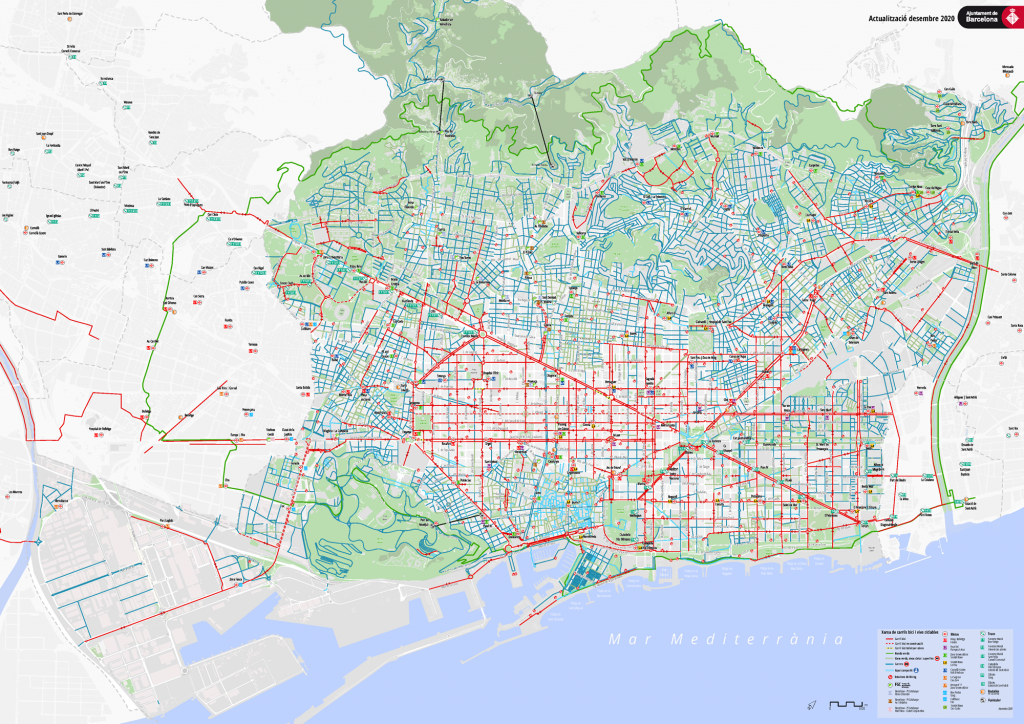
Why it is so important to have the ‘bike-train marriage’? How would you describe the current situation and what do you think should be improved? Where to put your energy?
Cycling is the most efficient way for short trips, while traveling by train is the most efficient for medium and longer distances. In 2014–2017 we worked together with the Catalan railways company (FGC) in a European project called BiTiBi to learn from the Dutch. We learnt a lot but we are very slow in implementing measures. FGC have bike parking facilities in most of their stations, but our National Railways (Renfe and Adif) still need to take big steps.
Here’s an example to illustrate the situation: in Barcelona Sants Station (the main station and best connected spot in Catalonia), the plans from national government for the new station had space for 200 bikes and 2,000(!) cars. I was the coordinator for the Cycling cities network, we asked them to swap the numbers in order to get 2,000 bike parking spaces and 200 for cars.
Why are we still imagining, in 2021, that many people need to travel to a train station by car. A train station that is located in the middle of the city, connected to all local and regional train lines, two metro lines, many bus lines and also taxis? These kind of situations are very frustrating. So energy is dedicated to fight against these ‘car-minded’ people (in Spain, Catalonia and Barcelona), and to show them that the ‘car century’ was finished more than 20 years ago.
You lived in Utrecht and you have a good knowledge of Dutch culture. As you might be aware, cycling has not always been the predominant means of transport. What will you bring from the Dutch cycling model to Barcelona? (An answer like ‘everything’…is not valid)
I guess the most important fact to ‘copy’ is educating school children to learn how to cycle in the city. This is a key factor, also when these kids become motorists, because then they know how to respect cyclists.
In the Netherlands this is happening already for 50 years – in Spain we have to start yet.

When we talk about improving cycling mobility we first think about infrastructure, bike lanes. But as you probably know, at Mijksenaar, we like to talk about the whole experience. We help people to navigate and connect them to places by supporting them along their journey. From the origin to their destination.
Which points should be improved, in your opinion, to offer cyclist the best experience? At home, at the office, at the school or any other spot along the journey?
In Barcelona I miss the ‘guiding systems’ to bike parking facilities that you’ve got in the Netherlands (sometimes thanks to signage, but some others just intuitive design of infrastructure). I hope that when we develop a safe bike parking network everywhere (that’s the first step…) we can then develop an intuitive design to find the places in the easiest and fastest way.

In this sense, in Barcelona city council we’ve got a nice program called ‘Bicycle-Friendly Building’ to offer safe bike parking in the public buildings that belong to the city council. Already from the outside you can read ‘Enter your bike’ and then follow the signs that bring you to the right location to park your bike. I think this is a good example that should be expanded in all buildings to make cycling more convenient.
How do you think a good system of information, addressed to cyclists, can improve their experience?
What I always notice when I’m in the Netherlands is that cycling is very easy and intuitive. Not only because the infrastructure is continuous, but also because it is all well signposted, and when you reach the city center, a company, a school or a train station, you know very easily where to park your bike. In Barcelona and the rest of Spain we are so far from this situation!
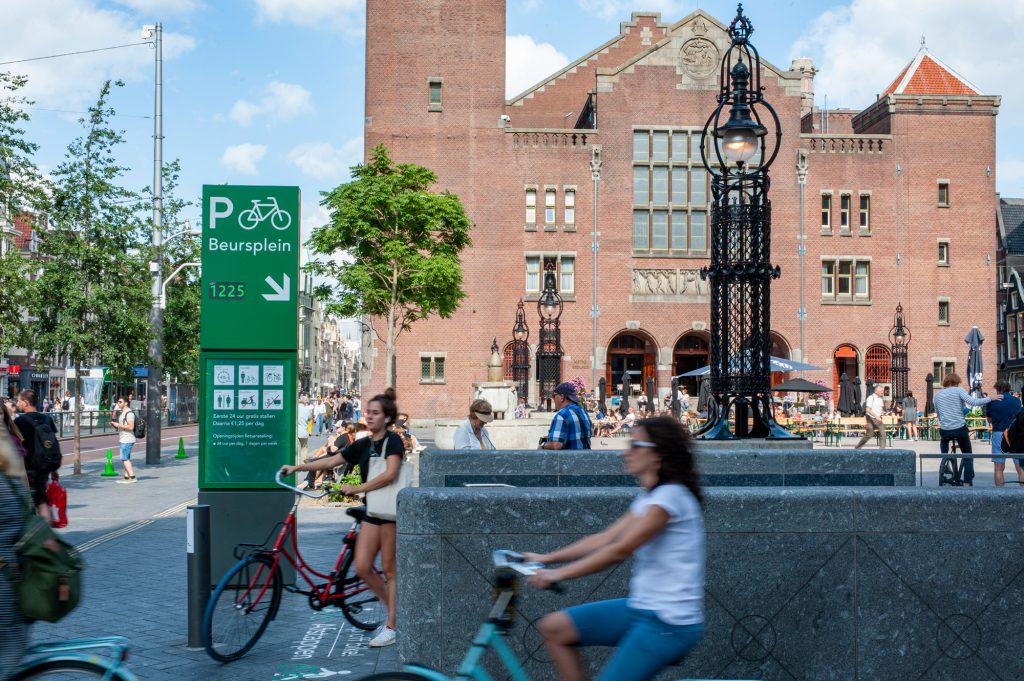
I usually travel every year to the Netherlands (my husband and kids are Dutch, and many friends live there), and every time I’m there I can’t stop taking pictures and being amazed by the new cycling promotion actions. Last summer I could appreciate some ‘wayfinding’ in the middle of Amsterdam that helps cyclists to find safe parking facilities. So much to learn and copy still!
Did you ever get lost when biking the city? What will you expect from a good information system for bikers? What are the points to be improved regarding communication and signage?
Yes, I still do, even in Barcelona. I am ashamed that sometimes I need Mr. Google to know where to go. Cycling infrastructure is not well connected yet and we still don’t have a signage system that is suitable for cycling. In the metropolitan context we’ve got a sign design, but it’s not very expanded yet.
What would you ask the God/Goddess of bicycles?
More sociology and less engineering!
Thank you for the interview, Sílvia!
🚲 Interview by Lara Pérez-Porro


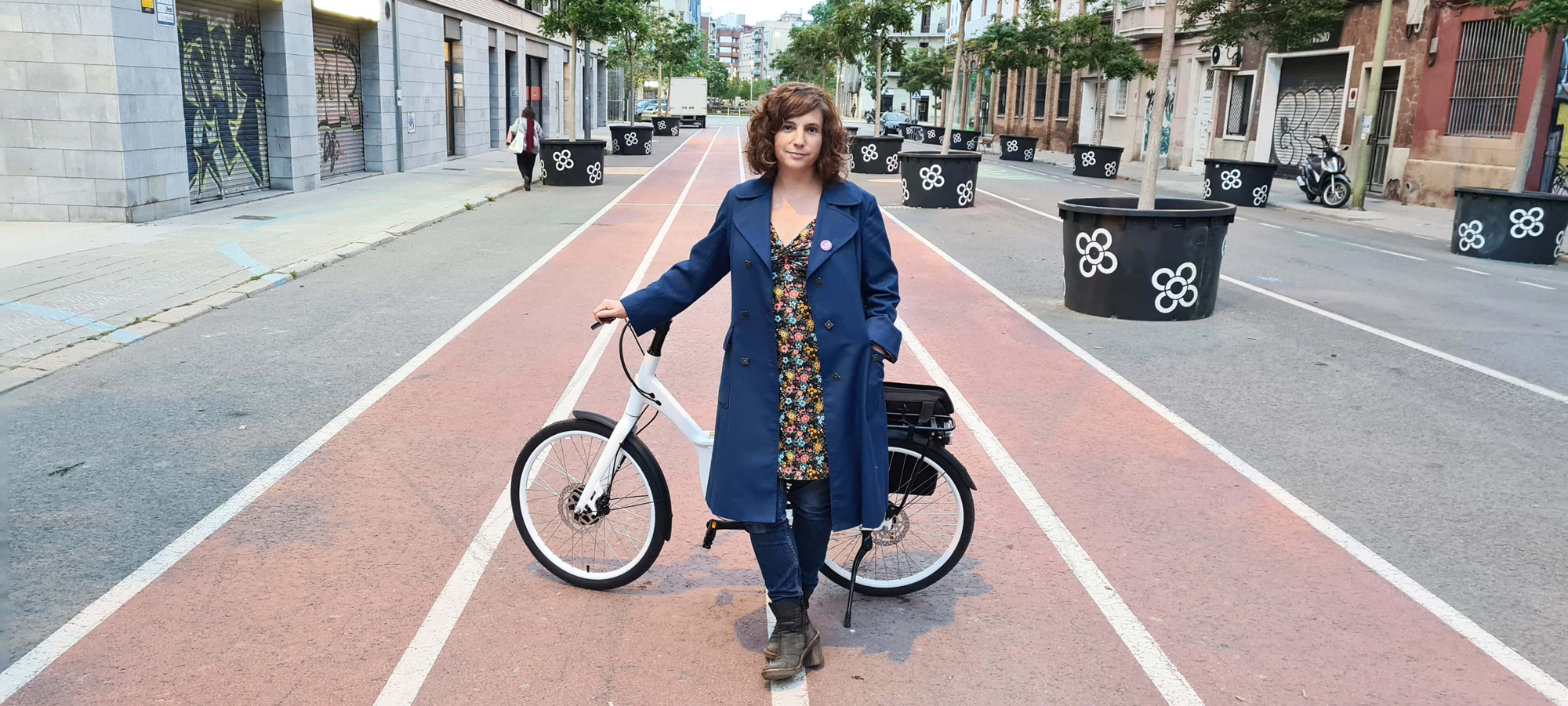
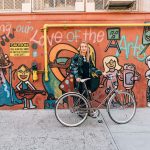

excellent initiative. I would say a public awareness campaign for car drivers to increase consideration for bikes is long overdue too and missing from this initiative.